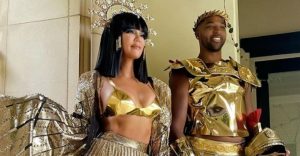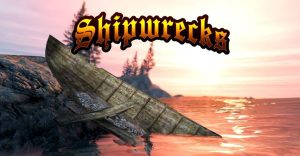Final Fantasy: Every Cid, Ranked Worst To Best

The Final Fantasyseries is not set in an interconnected universe. Each numbered game exists in a vacuum, completely separate from other titles. Every iteration creates a self-contained adventure, and while there are winks and nods here and there, along with Easter Eggs abound, every FF tells its own tale with its own language. Perhaps this effort towards always creating new worlds is what has enabled the series to stay hip and relevant for decades. Whether one is a young newcomer to the series or a veteran with nearly 30 years of FF experience behind them, each entry in the series prides itself on creating a new experience for the player without leaning too hard on nostalgia or fanservice.
Despite all being separate entities, a Final Fantasy game is recognizable by recurring elements such as crystals and airships, as well as critters like Chocobos, Moogles, Cactuars, and others. One of the most famous FF staples is Cid. Every Final Fantasy since II has featured a character called Cid in some capacity. Often, he’s portrayed as an older man, and he’s almost always an expert with machinery, airships in particular. In celebration of Final Fantasy XV’s father/daughter team of Cid and Cidney, we’re going to look back at the first 14 mainline Final Fantasy games (and our two favorite spin-offs) and judge them by their Cids. This is Final Fantasy: Every Cid, Ranked Worst to Best. Beware of spoilers for older Final Fantasy games.
16 Cid of the Lufaine (Final Fantasy)

As noted in the intro above, Cid doesn’t actually appear in the original 1987 Final Fantasy. However, he was posthumously added to the updated re-release of the game for Game Boy Advance. In these versions of the game, talking to various non-player-characters will reveal that Cid had created the player’s airship in ancient times.
While that’s the extent of his role in Final Fantasy, he does play a key role in the PSP one-on-one fighting spin-off, Dissidia 012. In this game, the FFI version of Cid serves as narrator, and he plays a pivotal role in the conflict between the Goddess of Harmony and the entity of Chaos, whom Cid and his wife had created using crystal ore and raised as their son. It doesn’t end well for them.
While the Dissidia series is decidedly non-canon with regards to its use of Final Fantasy‘s unconnected multiverse of characters, it does succeed in providing lots of fascinating context for the events of the original Final Fantasy title, which otherwise has a rather bare-bones narrative compared to its more complex successors.
15 Cid (Final Fantasy XI)

Final Fantasy‘s first foray into the Massively Multiplayer Online RPG genre was a smashing success, with a huge and fully-realized world to explore and many new characters to meet. One such fresh face is Cid, who is, of course, an expert with machinery. In the Chains of Promathia expansion, his expertise extends to airships, which he constructs to help the player on their quest to stop Bahamut and Promathia.
This version of Cid is a bit mellower than usual, but also more muscled-out; while he may be old and grey-haired, he is usually seen with a jolly smile, and he loves tinkering and helping people. He’s not bitter and jaded like some of the other Cids on this list.
Cid has a son in Final Fantasy XI, named Midras, or Mid for short. This is a reference to his Final Fantasy V counterpart; in that game, Cid was much older, but accompanied by his grandson, named Mid.
14 Cid del Norte Marquez (Final Fantasy VI)

There’s no getting over this fact: in Final Fantasy VI, Cid is dressed like a banana. We don’t know why, but Cid del Norte Marquez wears a yellow cloak/poncho/cowl getup which makes him look like an unpeeled, mustachioed banana.
This version of Cid is somewhat based on scientists like Albert Einstein, whose scientific research led to the creation of the atomic bomb and changed the face of warfare forever. Cid is the inventor of Magitek, which infuses humans with the power of God-like Espers (VI‘s version of crystals and summons). He becomes foster father to Celes, one of his experiments, and resents that his inventions are being used as weapons of war.
After the end of the world, or the half-way point of the game, Cid is watching over a comatose Celes. However, after she recovers, he falls ill, and eventually dies, leading Celes to attempt suicide; her unexpected survival helps to inspire her to seek out her friends and keep on fighting to save what’s left of the world from oblivion. Although Cid will almost surely die through normal play, it is actually possible to save his life, though the process is tedious and, frankly, not worth it, as Cid’s survival locks out one of the most dramatic scenes in all of video games. Sorry Cid del Norte Marquez, but Final Fantasy VI is better if you die.
13 Cid Haze (Final Fantasy III)

Like his predecessor in FFII and nearly all of his successors, Final Fantasy III‘s Cid Haze is an aged airship captain. He and the four young Onion Knights enter into an arrangement whereby he will happily shuttle them about with his airship if they lift the curse on his town, which has turned all of its residents into ghosts. He turns up a couple of other times in FFIII, asking for help and aiding the crew in return. The four warriors must find an Elixir to cure his sick wife. Said wife’s name is, naturally, Mrs. Cid.
Eventually, Cid fashions an airship for the party to use on their own, and even appears just before one of the final battles — along with other characters the party had helped throughout their adventure — to save them from a curse placed on them by the villainous Xande.
In the Nintendo DS remake of FFIII, Cid may appear in battle when he travels with the Luneth and his friends. While the player doesn’t have direct control over any of his actions, Cid will occasionally pop in during battle to perform a powerful physical or magical attack, offering a respite from the surprising difficulty of the early stages of the game.
12 Cid Previa (Final Fantasy V)

Final Fantasy V‘s Cid Previa is one of the oldest Cids in the series, but he’s also one of the sweetest. Perhaps having an adorkable grandson, Mid, helped to mellow him out in his old age. In FFV, Cid is, once again, an expert with airships, and he even turns the party’s ship into a fully aquatic submarine. At one point, after Bartz and his team fail to rescue the Fire Crystal, Cid is discouraged beyond possibility of condolence. Mid, upset at seeing his grandpa in such a sour state, smacks him upside the head and tells him to suck it up. It’s comical, but tender, and it snaps Cid back to his senses, enabling his return to lending aid to Bartz’s party on their quest to save the world.
Cid returns in the relatively little-known Japanese OVA FFV sequel, Legend of the Crystals. Set hundreds of years after the end of FFV, the story begins when a new threat, Ra Devil, steals Cid’s brain from his grave and murders poor little Mid. Ultimately, it’s up to a team of new heroes (led by a descendant of Bartz himself) to save the day and put Cid’s brain back where it belongs. Yeah, it’s a little wacky.
11 Cid Kramer (Final Fantasy VIII)

Is it just us, or does FFVIII‘s version of Cid look just a little like the late, great Robin Williams? This time around, Cid Kramer is the headmaster at Balamb Garden, a school for teenage students/elite soldiers. Final Fantasy VIII is unique from other titles in the series in that the story is told strictly from Squall’s point of view, and his romance with Rinoa is written to deliberately overwhelm the rest of the game’s plot. As a result, the universe-threatening conflict is further in the background than the average player might expect, and much of the greater plot doesn’t come into focus until nearly the end of the journey.
Balamb Garden was founded with a secret mission: to fight against a rogue sorceress, should one ever appear. Edea, the sorceress who has been possessed by the villain Ultimecia, is actually Cid’s wife. These two facts are dramatic enough to carry a whole game on their own, but within the context of Final Fantasy VIII, it’s just someone else’s story. Whether this style of storytelling is genius or a veritable treasure horde of missed opportunities is up to each individual player, but it reinforces the game’s theme that people are more than they seem, even if they don’t wear their entire life’s story on their sleeve.
10 Cid Aulstyne (Final Fantasy Type-0)

Cid Aulstyne doesn’t have very many scenes in Final Fantasy Type-0, but he plays a pivotal role in the spin-off title, which is part of the Final Fantasy XIII subseries, Fabula Nova Cryistallis. This Cid is the militaristic leader of the Milites Empire (it’s right there in the name!), who seeks to conquer the other kingdoms and claim their crystals.
While it’s not enough to redeem him, his quest has a degree of righteousness. He wishes to free Orience from the Crystals, the source of the world’s power, but also a malevolent force which is keeping humanity in an endless cycle or destruction and rebirth. In the end, when he realizes that his quest for independence from the Crystals was exactly what they wanted from him, he kills himself in a combination of defiance and resignation, but it does nothing to stop them from turning his body and soul into the Rursan Arbiter, the final boss of the game.
9 Cidolfus Demen Bunansa (Final Fantasy XII)

For the first time in the series’ history, Final Fantasy XII presented its resident Cid character as a villain. Doctor Cidolfus Demen Bunansa is the estranged father of the sky pirate Balthier. His obsession with putting mankind’s destiny away from the mysterious and omniscient Occuria, as well as his unrelenting devotion to uncovering the secrets of magical nethecite, slowly drove him to depression and madness.
Cid is a tremendous character in FFXII. While the game is often criticized for being over-complicated to a fault, its Shakespearean influence shines strongly with Cid, from his relationship with his son to his grander arc within the story, in which he seeks to do good deeds, only to bring about death and self-destruction. Plus, being a Final Fantasy villain, he becomes part of the franchise’s signature awesome boss fights. In the second and final encounter with the tragic villain, Cid summons Famfrit, an Esper who helps him in battle and must be defeated before Cid himself can be damaged.
8 Cid Raines (Final Fantasy XIII)

Along with Final Fantasy II, Final Fantasy XIII is the most polarizing entry in the long-venerated RPG series. FFXIII received great praise for its production values and complex mythology, but was derided for its extremely linear storytelling and total lack of meaningful side content. However, one area where FFXIII won unanimous approval from the fans was with the character of Cid Raines.
In a rare development, but following the precedent of FFXII, Cid finds himself battling our heroes as an anti-villain against whom Lightning has no choice but to fight. Cid fights for the people against the race of God-like fal’Cie. Initially, he helps Lightning and the other l’Cie, advancing his cause of freedom from the Gods. However, once the fal’Cie figure out his goals, they turn Cid into a l’Cie, forcing him to carry out their will, which is to help Lightning and company’s quest to destroy Cocoon. However, Cid rages against his destiny and becomes a Cie’th, a mindless monster who Lightning’s team defeats in a dramatic boss fight. Even though they have to put him down, Lightning and her team are inspired by Cid’s sacrifice to fight their fate and seek a way around their foretold demise.
He may find himself opposing Lightning and her allies, but he is not their absolute enemy, nor does Lightning hold a grudge against the former military commander. Despite his limited screen time, Cid made a strong impression in FFXIII and quickly became a fan favorite.
7 Cid nan Garlond (Final Fantasy XIV)

If Billy Connolly were a sexy anime character, he would be Final Fantasy XIV‘s Cid nan Garlond, with his flowing white hair and barrel-chested gravitas. Final Fantasy‘s second attempt in the Massively Multiplayer Online genre may have had a bumpy start, but it eventually evolved into one of the best MMORPGs in recent memory.
Cid played a role in the defunct original release of Final Fantasy XIV, which ended with Bahamut laying waste to the world and causing mass devastation to the land of Eorzea. In the A Realm Reborn re-tool, which was a totally new game, completely fixing the myriad problems of the 1.0 version, Cid returned, though he didn’t know it at first.
An amnesiac Cid appears in the care of a local church, going by the name Marques. After eventually regaining his memories and getting back to work on repairing airships, Cid goes on to assist the player in many of their quests. Aside from the games where Cid is a full-on playable character (more on those in a bit), XIV is probably the Final Fantasy title in which Cid plays the largest role in the player’s quest.
6 Cid Pollendina (Final Fantasy IV)

While Cid appeared as a guest character in the Nintendo DS remake of Final Fantasy III, his first appearance as a key party member was in 1991’s Final Fantasy IV. Cid Pollendina is the lead airship engineer for the Kingdom of Baron. He is among the first to suspect that some evil force is corrupting the once-good king, and winds up being jailed for treason after his suspicions are proven true.
After Cecil and his crew save the castle and clear Cid’s name, the cantankerous old man joins the party for a spell, beating up enemies with his wrench. At a pivotal moment later on, Cid sacrifices himself to save the party. His death scene is nothing short of extreme overkill, as he jumps off of the airship, Enterprise, while holding a bomb. His sprite literally disappears, as if having been vaporized by the explosion, completely wiped off the face of the planet…
Somehow, Cid turns up the Dwarf’s infirmary, with only minor injuries. Cid Pollendina is so badass, he shrugs off, simultaneously, a massive bomb to the face and a thousand-foot fall. Cid even makes a final return appearance in the distant sequel, Final Fantasy IV: The After Years, where he’s as audaciously awesome as ever.
5 Cid (Final Fantasy X)

The world of Spira in Final Fantasy X is inhabited by four main races: Humans, Guado, Ronso, and Al-Bhed. While there is a degree of tension between most of the races, none are more persecuted or outright hated than the Al-Bhed, who are regarded with nigh-universal disdain. In Spira, most people follow the teachings of Yevon, which forbid the use of Machina, or machines. The Al-Bhed choose to defy this arbitrary rule, and are outcasts because of it.
Of course, being a race obsessed with technology and engineering, it should come as no surprise that Cid is prominent among their ranks. Cid is basically the boss of the Al-Bhed, insofar as they even have a leader, and he also is the captain of the airship which the party uses in the later stages of their journey to defeat Sin. Cid is also father to Rikku, the youngest and most adorable of FFX‘s main cast, and their bickering serves as a source of humor and tenderness throughout X and its sequel, X-2.
4 Cid (Final Fantasy II)

Cid’s first proper appearance was in Final Fantasy II, where he was seen with many of the traits which would recur in future iterations of the character. He ferries the player around on his airship, has the prickly personality of a hardened mercenary along with a strong and righteous heart, and ultimately chooses to fight alongside the heroes against the villains. In this case, however, his fight ends in death. Fortunately for Firion and his friends, Cid gifts them his prized airship while on his deathbed, giving them the edge they need to continue their quest to defeat The Emperor and his minions.
Final Fantasy II is known for its surprisingly dark storyline and dishearteningly high body count. Back in the day, Cid was just another corpse to throw on the pile, but his death is much rougher on today’s audiences, who know all about the lasting legacy of the Cid name, and how it all started here, with the ill-fated Cid of Final Fantasy II.
3 Cid Fabool IX (Final Fantasy IX)

Many Cids have sported mustaches, including those from FFII, III, V, and VI. However, none of them can match the awe-inspiring glory of Cid Fabool IX, who boasts not only the greatest mustache in Final Fantasy, but perhaps the greatest facial hair of all time, across any medium. Cid Fabool IX’s mustache is so amazing, he even retains it when his jealous wife transforms him into an Oglop; Cid had an short-term fling with a young barmaid, and Hilda didn’t take too kindly to his betrayal, transforming him and then running away.
In his quest to become a human again, he commissions Doctor Tot to create a curative potion, but it only turns him into a frog; better, but by no means ideal. Even as a frog, however, Cid still has his signature mustache. It isn’t until he reunites with Hilda that she forgives him and turns him back into his original form. In the game’s ending, it is shown that Cid and Hilda are officially back together, and have even adopted Eiko, FFIX‘s tween summoner, as their daughter. It’s just a small part of Final Fantasy IX‘s finale, but it’s a sweet moment that proves that Cid Fabool IX is more than just a beautiful mustache — he’s also a committed to his marriage and being a good father to a deserving young girl.
2 Cidolfus Orlandeau (Final Fantasy Tactics)

Final Fantasy Tactics is a tough game. Every player of FFT remembers the first time they got completely wasted by the archers and black mages of the Dorter slums, or how totally unfair that one-on-one battle with Wiegraf can be. However, once Cidolfus Orlandeau joins the party, the game is broken by how completely overpowered he is. In the world of Ivalice, Cid is known as T.G. Cid, which is short for Thunder God Cid, and his moveset reflects this imposing nickname.
As a Sword Saint, Cid has access to every Swordskill in the game. These powerful moves are normally distributed between special characters like Agrias and Gaffgarion, but Cid can use them all. In addition, the Sword Saint class has the highest stat growth in the game, so he will continue to outpace all other characters at high levels. Basically, nobody in Final Fantasy Tactics can hold a candle to the Thunder God known as Cid. Even the master manipulator Delita knows this, orchestrating events behind the scenes so that Cid can stay with Ramza’s party and help them in their fight against the Lucavi, a fight that Delita couldn’t possibly hope to win on his own.
1 Cid Highwind (Final Fantasy VII)

If there’s one Cid to rule them all, it simply has to be Cid Highwind from Final Fantasy VII. Bitter from his failed attempt at being the first man in outer space, Cid’s arc in VII is the slow mellowing out of a broken and angry man whose past failures have precluded the possibility of a future. He’s constantly cursing up a storm and smoking cigarettes; he’s a gruff character, even by the gritty standards of Final Fantasy VII.
Based on his prickly personality, one might expect Cid to use a weapon like a gun, brass knuckles, or even a broken whiskey bottle. Curiously, he uses a spear, and fits the gameplay archetype of a Dragoon, making use of that class’s powerful Jump ability as his first Limit Break. This is a reference to Kain Highwind, one of the protagonists of Final Fantasy IV, from whom Cid inherited his surname. Cid returns in The Compilation of Final Fantasy VII, generally much happier and healthier than when we first saw him back in Rocket Town.
—
What do you think? Who is your favorite Cid? Sound off in the comments!
About The Author


















